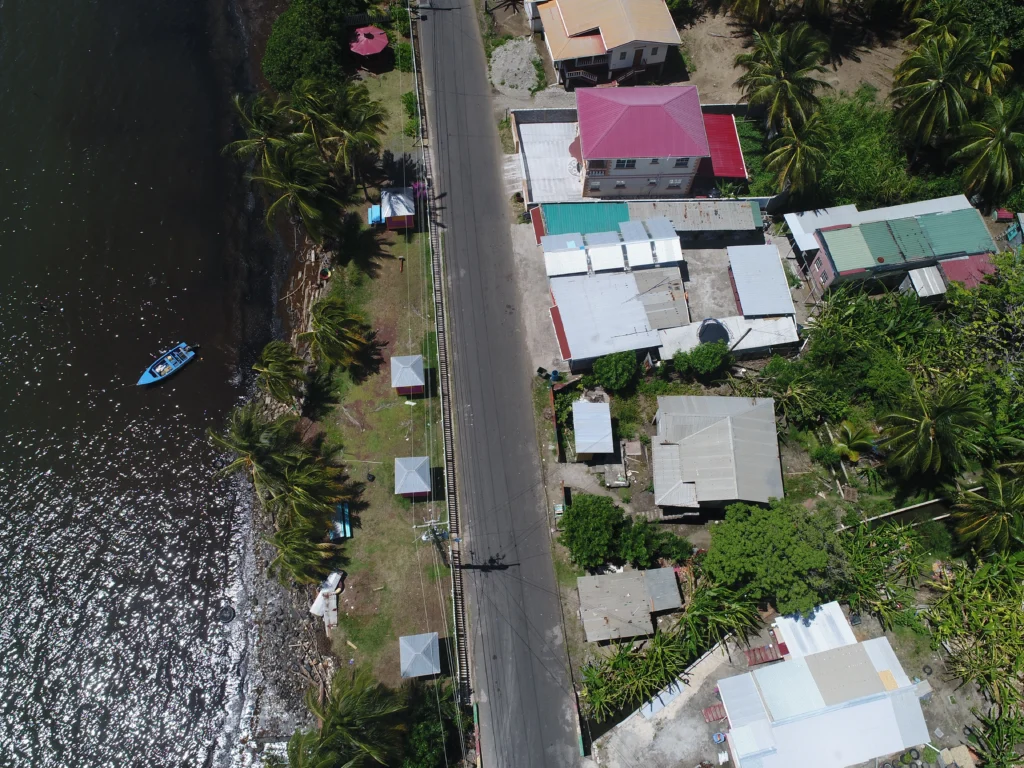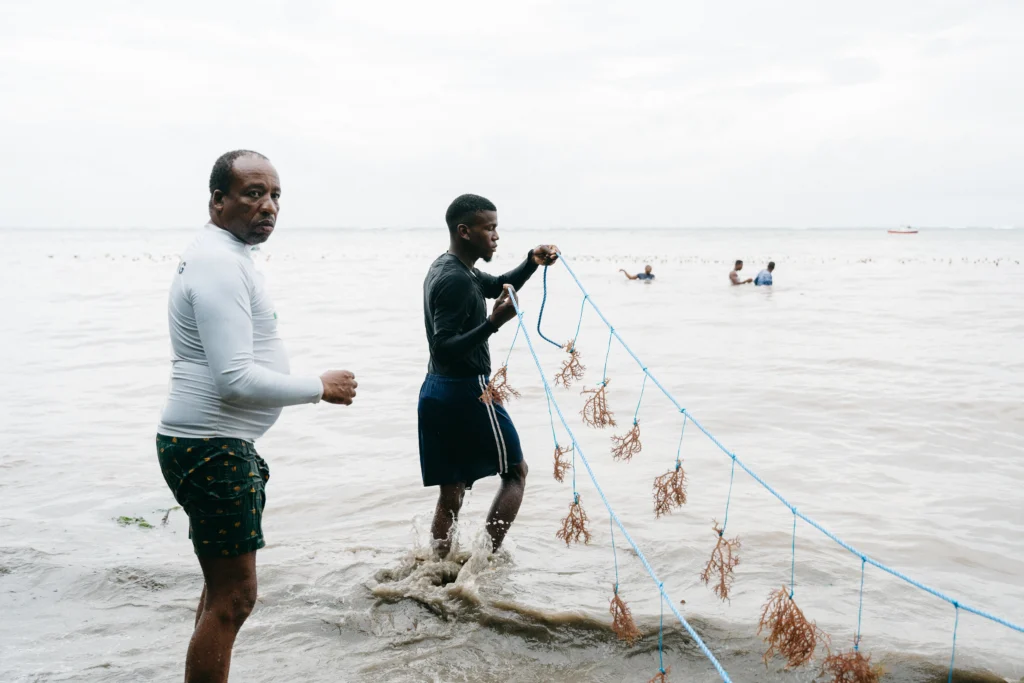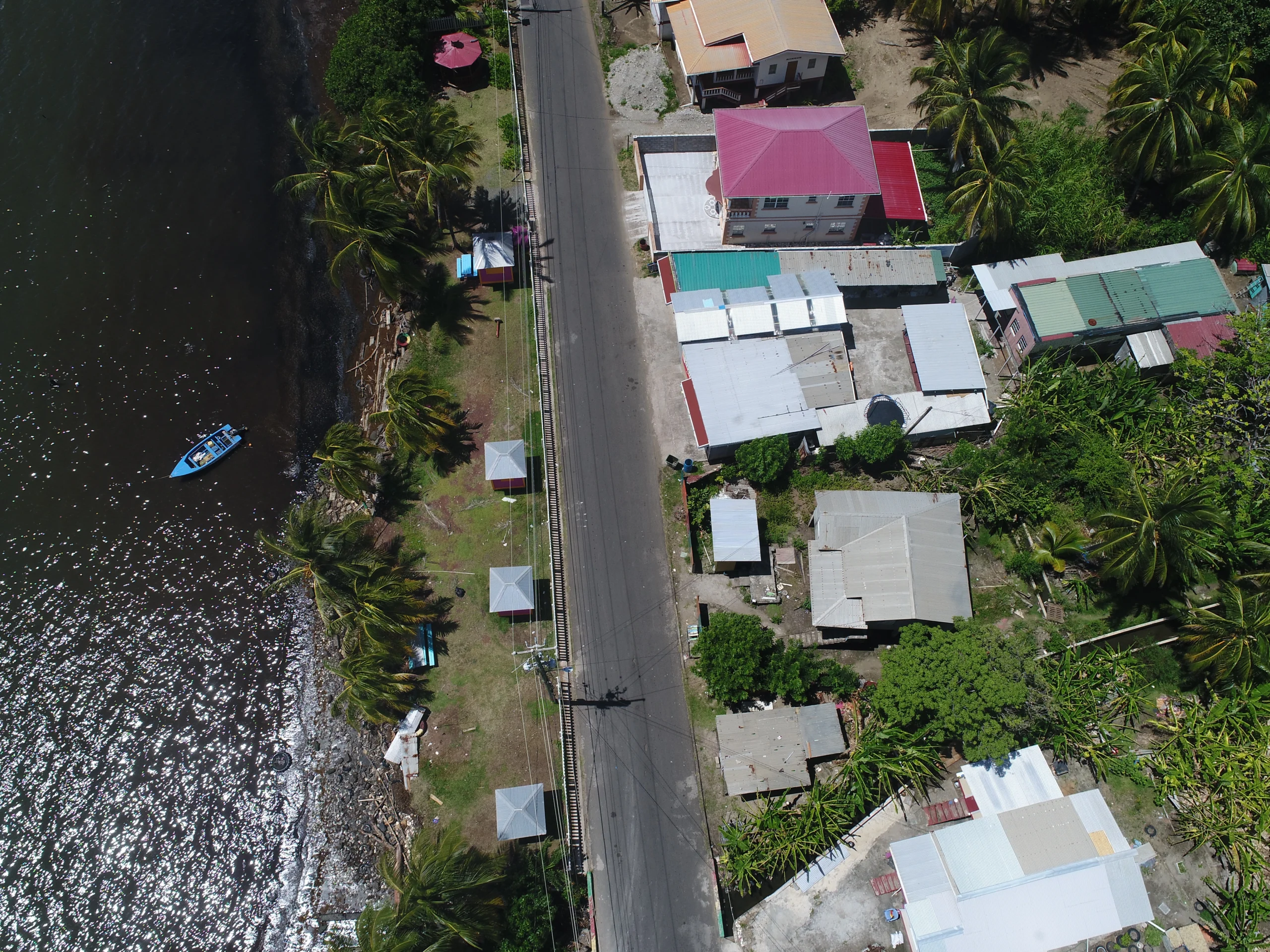Authors: Kendon James – WINDREF, Hayden Billingy – CBF, Renée Smith – CBF, Shanna Prevost – CBF
Coastal communities in the Caribbean are on the frontlines of climate change. Rising seas, stronger hurricanes, and eroding coastlines threaten lives and livelihoods. For years, the default response was to build more seawalls and concrete barriers. Yet these “grey” solutions alone are rarely enough. They often fail to keep pace with changing conditions and do little to restore the ecosystems that naturally protect shorelines.
In Soubise, Grenada, the Windward Islands Research and Education Foundation (WINDREF)’s Innovative Grey-Green Infrastructure (ING) Project is showing a different way forward. The project was funded through the Ecosystem-based Adaptation (EbA) Facility of the Caribbean Biodiversity Fund (CBF), with support from the German Federal Ministry for the Environment, Nature Conservation, Nuclear Safety and Consumer Protection (BMUV) and the KfW Development Bank. It demonstrates how blending engineered structures with restored ecosystems can both protect coastlines and create new opportunities for communities.
A Caribbean Model for Resilience
Since its launch in 2016, the CBF’s EbA Facility has financed 34 projects across the region, helping countries pilot and upscale solutions that place nature at the heart of climate resilience. In Grenada, WINDREF’s ING Project is a vivid example of how this approach delivers lasting positive results for both ecosystems and communities.
Rather than relying solely on seawalls as is typical in grey-green infrastructure, the project blended gabion baskets and boulders with mangroves, sea grapes, and coral reef rehabilitation. The result is a shoreline that absorbs wave energy, traps sediments, and provides habitat for marine life while protecting nearby roads and homes.
From Vulnerability to Proof of Concept
The project’s impact became clear when Hurricane Beryl struck in July 2024, bringing storm surges of up to 2.7 meters. While nearby areas suffered severe flooding and erosion from the Category 4 hurricane, the reinforced shoreline in Soubise held firm. Vegetation buffered the blow but survived, erosion was minimized, and the community had a safer space to weather the storm. For donors and project partners, this was compelling proof that hybrid infrastructure works.
Remarkably, the benefits go beyond coastal protection. Over 1,800 community members participated in restoration activities, from planting mangroves to tending coral nurseries. This hands-on involvement has built long-term stewardship and trust, ensuring the project’s sustainability for the future.
Nature-Based Solutions That Create Livelihoods
For the people of Soubise, resilience is also about sustaining livelihoods amidst the storms. The project introduced sea moss farming, training 14 locals (including 6 women), and establishing 11 farms that now supplement household incomes. Training in food safety standards has opened new market opportunities for these products.
The restored shoreline has also unlocked new social and economic activities. Expanded coastal space now hosts a monthly seafood festival that draws more than 1,000 visitors. Fishers use the safer shoreline for boat repair, fish cleaning, and daily work. These tangible benefits are what make ecosystem-based adaptation a practical, people-centered solution.
Overcoming Challenges, Learning Lessons
Like many conservation projects, the ING initiative faced setbacks. Coral bleaching from rising ocean temperatures reduced survival rates in nurseries, and delays in sourcing materials during the COVID pandemic slowed implementation. Yet these challenges became opportunities for innovation. Additional support from the Global Environment Facility Small Grants Programme (GEF SGP) allowed the WINDREF team to establish deeper-water coral nurseries, less vulnerable to heat stress. Such adaptive measures illustrate the importance of flexibility when working with both ecosystems and communities.
Scaling Impact Across the Caribbean
The success of the ING Project has drawn national attention. Government officials attended the closing ceremony, publicly endorsing grey-green approaches as part of Grenada’s coastal management strategy. This endorsement reflects a wider regional momentum. From Cuba to Grenada, EbA projects supported by the CBF are reshaping how the Caribbean prepares for climate change.
By combining engineering with ecosystems, the EbA Facility is helping countries strengthen coastlines, secure water supplies, restore biodiversity, and build resilient local economies.
Looking Ahead
The Grenada project is completed, but its lessons will endure as continued funding is extending restoration, monitoring, and training to the nearby Telescope area. Perhaps most importantly, the project offers a replicable model for other vulnerable coastal communities across the Caribbean.
As the CBF celebrates six years of grant funding under the EbA Facility, projects like ING prove that investing in nature is about survival, resilience, and prosperity. For donors, partners, and communities alike, the project’s success in Grenada underscores why nature-based solutions must remain central to the Caribbean region’s climate future.
For more information on this project please contact:
Name: Dr. Trevor Noel
Title: Deputy Director of WINDREF
Email: TrevorNoel@sgu.edu

Shoreline Before Project Intervention. Photo Credit: Andre Witzig, March 2023

Shoreline After Project Intervention, resulting in the reclamation of 1000 square meters of land. Photo Credit: Floyd Robinson, June 2025

Participants engaging in the set up of a sea moss plot under the sea moss training component of the ING project. Photo Credits: Floyd Robinson, November 2023
The views expressed in this article are for information only and represent opinions and deductions from CBF project implementation in the region. This does not by any means reflect the full official position of the Caribbean Biodiversity Fund or its partners.





